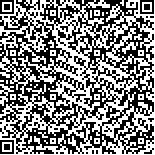| 摘要: |
| 于1987年对中国对虾雄对虾交配能力进行实验观察;于1994、1995两年进行补充实验。结果证明,在实验室条件下,保持雄对虾的相对数量而且有充足雌对虾供交尾选择的情况下,中国对虾雄对虾在一个交配季节中的自然交配能力可达到3–4次;交配后生成新的精荚并再次发生交配的平均时间约为3d,但部分雄对虾交配次日即可生成新的精荚并再次发生交配行为;雌雄性比5:1和2:1对雄对虾在整个交配季节中的累计平均交配率没有明显影响。但在交配盛期,雌雄5:1实验组的累计交配率为2.6次,而2:1两个实验组的累计交配率只有1.13和1.43次,说明较多可供选择的雌对虾的存在,对雄对虾在一定时期内的交配能力和精荚再生可能有诱导作用。 |
| 关键词: 中国对虾 雄对虾 交配能力 精荚再生 |
| DOI: |
| 分类号: |
| 基金项目:国家攀登计划B资助项目,PDB-6-2-3号 |
|
| STUDIES ON THE MATING ABILITY AND SPERMATOPHORE REGENERATION IN MARINE SHRIMP PENAEUS CHINENSIS |
|
WANG Qing-yin,LI Jian;,SUN Xiu-tao,KONG Jie,YANG Cong-hai
|
|
Yellow Sea Fisheries Research Institate, Chinese Academy of Fishery Sciences, Qingdao, 266071
|
| Abstract: |
| This paper deals with the mating ability and spermatophore regeneration of marine shrimp Penaeus chinensis under laboratory conditions. Unmated cultured shrimp with body lengths of 13.5–15.7 cm were used in the experiments. Initial observations were made in 1987, and supplementary experiments were carried out in 1994 and 1995. Unmated male and female shrimp were stocked separately in indoor tanks and employed for experiments after one-week acclimation. Female : male = 5 : 1 and 2 : 1 were arranged to test the effects of different sex ratio on mating ability and spermatophore regeneration in male P. chinensis. The daily mating rate is defined as the number of mated females divided by that of males in the tank. The accumulated mating rate (AMR), is used to indicate the average mating ability of the males in each trial, is obtained by summing up the daily mating rate of the trial during the mating season. The following formula is used to calculate AMR:

where n is mating days, mf is the number of mated female, and m is the number of male used for each trial. Main results were as follows.
1. In laboratory conditions, the natural mating ability of male P. chinensis might attain 3-4 times, but depended on the relative number of the males and females available for mating selection.
2. The average time needed for males to regenerate new spermatophores after mating and again with mate females was around 3 days. Some male shrimp might regenerate new spermatophores and mating was observed again in the very next day.
3. The finding that in the 5 day frequent mating period, AMR in the two trials of female:male=5:1 were 2.60, while AMR in the two trials of female:male=2:1 were only 1.13 and 1.43, respectively, indicated that in this period, more females were available for mating selection, and so might induce and / or promote the male's mating ability and spermatophore regeneration.
4. There were no significant differences between the AMRs obtained from the whole mating season for trials of female:male=5:1 and those of female:male=2:1, which indicated that the potential mating ability of male P. chinensis was determined by its biological characteristics. Even though higher ratio of female might induce more mating of the male in the short term, it could not enhance the male's potential mating ability.
5. The factors which influenced the mating ability and spermatophore regeneration of male P. chinensis were the shrimp's state of health, temperature, sex ratio, male's maturity, light intensity, stocking density, etc., while molting of the female is an absolute necessity for P. chinensis to mate. |
| Key words: Penaeus chinensis, Male, Mating ability, Spermatophore regeneration |

